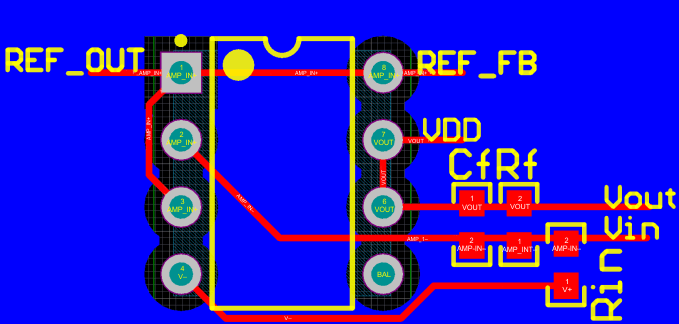JAJSDC7 June 2017 LM10-MIL
PRODUCTION DATA.
10 Layout
10.1 Layout Guidelines
For best operational performance of the device, good printed-circuit board (PCB) layout practices are recommended. Low-loss, 0.1-uF bypass capacitors should be connected between each supply pin and ground, placed as close to the device as possible. A single bypass capacitor from V+ to ground is applicable to single-supply applications.
10.2 Layout Example
 Figure 72. Layout Example
Figure 72. Layout Example